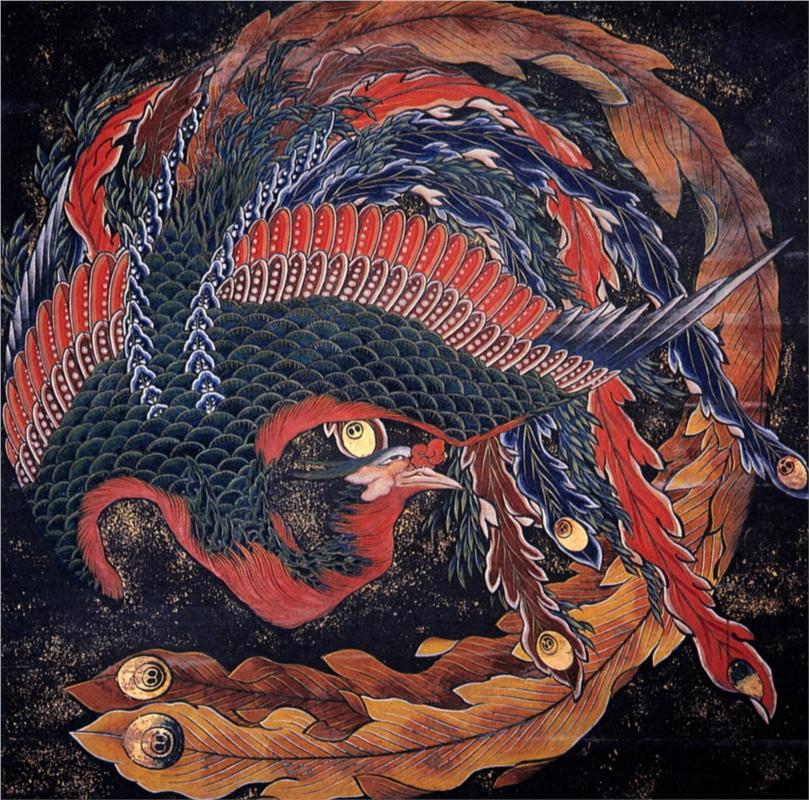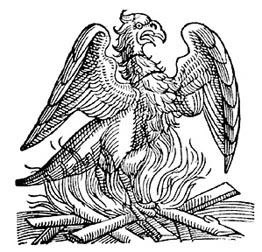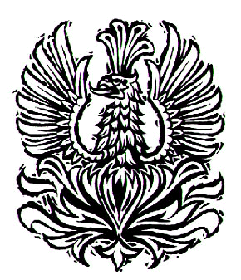parent nodes: Águia | Bestiário | Fênix | Glossário de termos alquímicos e herméticos | Katsushika Hokusai | O Mito da Fênix | Pavão | Tiferet
Fênix

Katsushika Hokusai (1760-1849). Fênix. Clique no link para ver a imagem em tamanho maior:rel://files/GO%20Hokusai/phoenix.jpg!HalfHD.jpg
lpd
Figura mitológica representada por uma ave que morre e renasce das próprias cinzas. Diz a lenda que a fênix, quando sentia aproximar-se o fim, reunia um monte de madeira e palha seca e o expunha aos raios do Sol para que ardesse, atirando-se em seguida às chamas. Da medula de seus ossos nascia então um novo pássaro, rejuvenescido e renovado. A fênix é símbolo da imortalidade da alma, e também do caráter cíclico dos acontecimentos. Na alquimia, representa a regeneração eterna da vida universal.
f.: Pellegrini, L. (1995). Dicionário de Símbolos Esotéricos. São Paulo: Editora Três.
fênix

De Lycosthenes 'Prodigiorum ac Ostentorum Chronicon, o Phoenix é o mais célebre de todas as criaturas simbólicas fabricadas pelos antigos mistérios para o propósito de ocultar as grandes verdades da filosofia esotérica. Embora os estudiosos modernos da história natural declarar a existência do Phoenix ser puramente mítico, Plínio descreve a captura de um desses pássaros e sua exposição no Fórum Romano durante o reinado do imperador Cláudio.
2

Unique in life, the Phoenix has no brothers or sisters, nor mother or father. She gives birth to herself. This bird will live anywhere from 100 to 12,954 years, though the most common life span for her is 500 years. Nearing the end of this time frame, the Phoenix feels the weight of time and knows that her end is near. So she builds herself a nest of spices, herbs, leaves and twigs atop of a date palm and rests inside of it, her wings outstretched. Soon the heat of the sun will ignite the nest, and the Phoenix inside will burn to ashes and die. Yet under the evening stars, life awakens inside of the ashes, and with the morning sun a young Phoenix will fly from the nest, to greet the new day and it's new life with all of the birds of the air flying behind it in homage. There are, of course, variations to this account at varying periods of history.
The Phoenix is extremely thick in symbolism. Like the Gryphon, the Phoenix has been used to represent Christ and his resurrection, and is most recognizable as being a symbol of the dying and rising sun. The very name "phoenix" means "crimson", "date palm", and "Phoenicia", in Greek, proving that to the Greeks that the golden, red and purple Phoenix was the representation of the rising sun in the east, and nested itself upon date palms, which continually renews itself like the fantastic bird.
Our image of a Phoenix rising from the flames has it's basis in ancient heraldry, where the bird is heavily used due to it's symbolism. In fact, such a depiction was used as a symbol of the great warrior maid Joan of Arc, with the motto, "Her death itself will make her live". Alas, like the Gryphon, the Phoenix fell under the discrediting eye of Sir Thomas Browne in his Vulgar Errors (1646), and despite the efforts of Alexander Ross, was finally marked as a figure of fantasy.
Even the Phoenix has a large number of relatives. There is the Egyptian bennu, the keeper of the book of which is and what shall be. The firebird of Russian lore, a bird of jeweled eyes and flowing plumage who stole golden apples from the Tsar's garden. The Bird of Paradise, or Manucodiata, has a brilliant plumage much like the Phoenix, but is footless so that it constantly flies through the heavens and can never touch the sins of the earth. There is also the Cinnamon Bird of Arabia, the Cinomolgus, who makes her nest of cinnamon, a spice once valued as much as gold. And finally, there is the beautiful Feng Huang, emperor of all birds and ruler over the southern quadrant of the sky in China. Actually, the Feng Huang is sometimes regarded in China as two birds, one male (Feng) and female (Huang), who are a symbol of everlasting love since they live together in the Land of Immortals forever.
And yet despite facts and myths, a legend is indeed a legend, left open to interpretation and a wealth of opinions. In fact, up and coming author Melissa Hartman has her own idea of how history should have treated the Phoenix. Read more on her interpretations of and love for the immortal bird at Vahazayi.com!
"If one to ask you to picture the mythical Phoenix, what would come to mind? Nine times out of ten, you would envision a small, eagle sized creature; perhaps it would have red and gold plumage, maybe with a trace of purple. Pressing the matter further, to have read about this creature, either in an encyclopedia or in a fantasy novel, one would find a wealth of documents depicting a gilded songbird, a pet of the ages. A creature that served only time and was tired of the endless cycle of death and rebirth. Such is the creature you would encounter; it may come in a few different body shapes and genders, but the tales remain the same: be it eagle like, swanlike, or pheasant like, the Phoenix's appearance to mankind is staid, locked within the cycle of rebirth and renewal.
Yet, through time and stereotypes, a new creature emerges. No longer singular, they stand tall, taller than an eagle, rising more than 11 feet in height, to a glorious 20ft. Coming in colors more varied than those found in fire, they live, work and simply are more than the Phoenix of bygone days. These are the Vahazayi Phoenixes, born to protect the Universe and uphold that which is right. Here you are not presented with a muted songbird created to be the pet of kings, but opinionated, unique and vocal beings with the innate power to transform into living flame, breathe fire and of course, hold immortality. Nothing before and nothing since are the diamond-eyed race. Thus is how I perceive the immortal, I who have borne this oft-misconceived creature for many years within my mind. Not of a pretty pet of kings and emperors, nor a slave to a timeless fate, but of a proud and noble race of warriors and defenders."
f.: l. ext.
ENCYCLOPAEDIA V. 51-0 (11/04/2016, 10h24m.), com 2567 verbetes e 2173 imagens.
INI | ROL | IGC | DSÍ | FDL | NAR | RAO | IRE | GLO | MIT | MET | PHI | PSI | ART | HIS | ??? 

